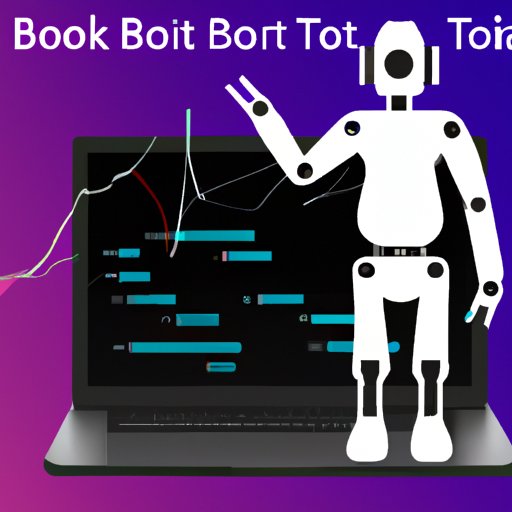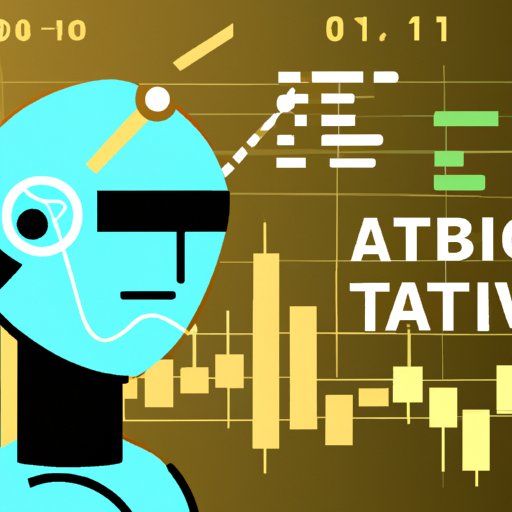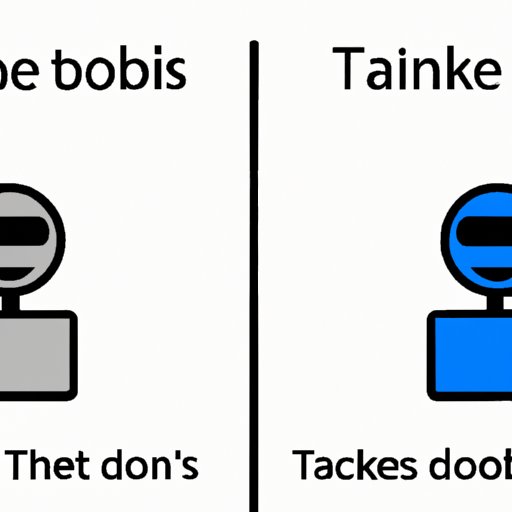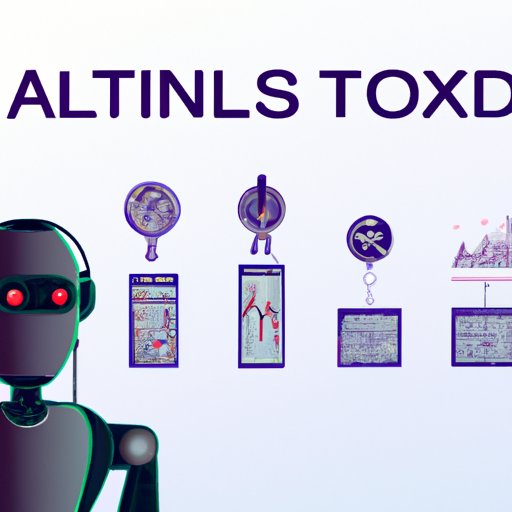Introduction
Artificial intelligence (AI) has revolutionized many aspects of our lives. From healthcare to transportation, AI is being used to improve efficiency and accuracy. One area that has seen significant growth in recent years is the use of AI-based trading bots for automated trading. In this article, we will explore what AI trading bots are, how they work, the benefits and drawbacks of using them, and the security risks associated with them.
An Overview of AI Trading Bots: How Do They Work?
AI trading bots are computer programs that use artificial intelligence algorithms to analyze financial markets and execute trades on behalf of users. These bots are designed to make decisions based on market data and trends, allowing them to identify profitable opportunities and act on them quickly.
AI trading bots use various strategies to determine when and how to trade. Some bots may use technical analysis to identify patterns in past price movements and predict future price movements. Other bots may use fundamental analysis to evaluate economic indicators, news, and other factors that could affect the price of an asset.
The types of strategies used by AI trading bots depend on the bot’s programming and the user’s preferences. Some bots may use a combination of strategies while others may specialize in one particular strategy. It is important to note that AI trading bots are not infallible and can make mistakes, so it is important to research and test any bot before using it to trade.

Exploring the Benefits and Drawbacks of AI Trading Bots
One of the main benefits of using AI trading bots is that they can operate 24/7 without the need for human intervention. This allows users to take advantage of opportunities in the market even when they are not actively monitoring the markets. Additionally, AI trading bots have the potential to make more accurate decisions than humans due to their ability to analyze large amounts of data quickly and accurately.
However, there are some drawbacks to using AI trading bots. For example, the accuracy of the trades depends heavily on the quality of the algorithms used. If the algorithms are not programmed correctly, the bot may not be able to accurately identify profitable opportunities or execute trades correctly. Additionally, AI trading bots can only analyze data from past performance, which means they may not be able to accurately predict future events.

Evaluating the Accuracy of AI Trading Bots
The accuracy of AI trading bots is affected by a number of factors, including the quality of the algorithms used, the amount of data available, and the current market conditions. As previously mentioned, if the algorithms are not programmed correctly, the bot may not be able to accurately identify profitable opportunities or execute trades correctly. Additionally, if the data available is limited or outdated, the accuracy of the trades could be negatively impacted.
In terms of market conditions, AI trading bots may struggle to accurately identify profitable opportunities in volatile or unpredictable markets. This is because the algorithms used by the bots may not be able to accurately predict how the market will react to certain events or changes in conditions.
Despite these challenges, researchers have found that AI trading bots can be quite accurate. A study conducted by the University of Oxford found that AI trading bots were able to achieve an average return of 8.9%, compared to 6.3% for human traders. This suggests that AI trading bots may be able to outperform human traders in some cases.

A Comparison of Human Traders vs. AI Trading Bots
When it comes to trading, there are advantages and disadvantages to both AI trading bots and human traders. On the one hand, human traders have the benefit of experience, intuition, and creativity, which can allow them to make better decisions in certain situations. However, human traders are also prone to making mistakes due to emotions and fatigue, which can lead to losses.
On the other hand, AI trading bots can provide users with the ability to trade 24/7 without the need for human intervention. Additionally, AI trading bots can process large amounts of data quickly and accurately, which can help them identify profitable opportunities that might otherwise be missed. However, AI trading bots may struggle to accurately identify profitable opportunities in volatile or unpredictable markets, and their accuracy can be affected by the quality of the algorithms used.
Examining the Role of Regulations in AI Trading Bot Use
The use of AI trading bots is subject to a variety of regulations depending on the jurisdiction. In the United States, the Securities and Exchange Commission (SEC) requires AI trading bots to register as broker-dealers before they can operate. Additionally, the SEC imposes restrictions on the types of investments that AI trading bots can make and the amount of risk they can take on.
In Europe, the European Securities and Markets Authority (ESMA) has implemented similar regulations regarding the use of AI trading bots. These regulations are designed to protect investors from potential losses caused by inaccurate or fraudulent trading practices. Additionally, ESMA requires AI trading bots to adhere to certain standards of conduct.
Investigating the Security Risks of AI Trading Bots
As with any type of technology, AI trading bots come with certain security risks. One of the most common risks is the possibility of malicious actors taking control of the bot and using it to execute unauthorized trades. Additionally, hackers may be able to access sensitive information stored on the bot, such as passwords or credit card numbers.
To mitigate these risks, it is important to ensure that the bot is properly secured. This includes ensuring that all passwords are secure, that the bot is regularly updated with the latest security patches, and that the bot is protected by a firewall. Additionally, users should always be aware of any suspicious activity on their accounts and report it immediately.
Conclusion
AI trading bots have become increasingly popular in recent years due to their ability to analyze large amounts of data quickly and accurately. They have the potential to make more accurate decisions than humans, though their accuracy can be affected by the quality of the algorithms used and the current market conditions. Additionally, AI trading bots are subject to a variety of regulations and come with certain security risks that must be addressed.
Overall, AI trading bots can be a useful tool for traders looking to take advantage of opportunities in the markets. However, it is important to thoroughly research and test any bot before using it to trade, and users should always be aware of the risks associated with AI trading bots.
(Note: Is this article not meeting your expectations? Do you have knowledge or insights to share? Unlock new opportunities and expand your reach by joining our authors team. Click Registration to join us and share your expertise with our readers.)
